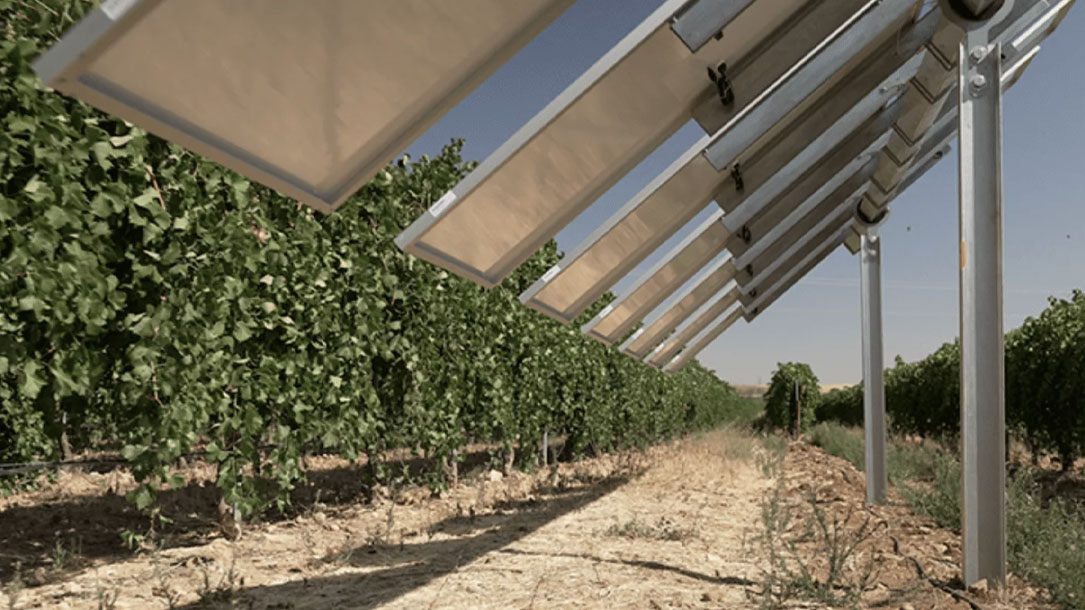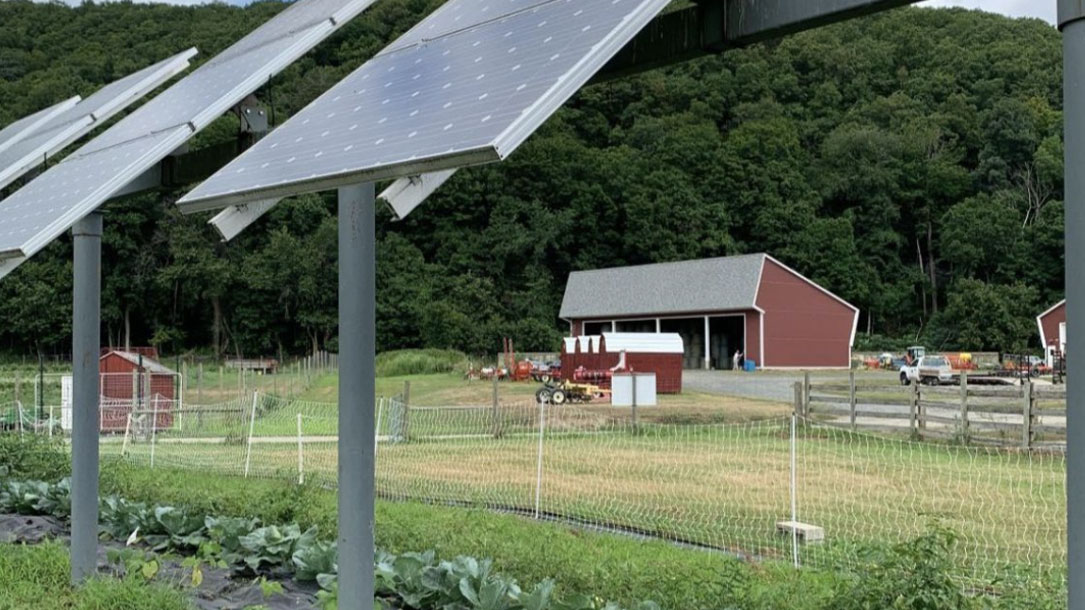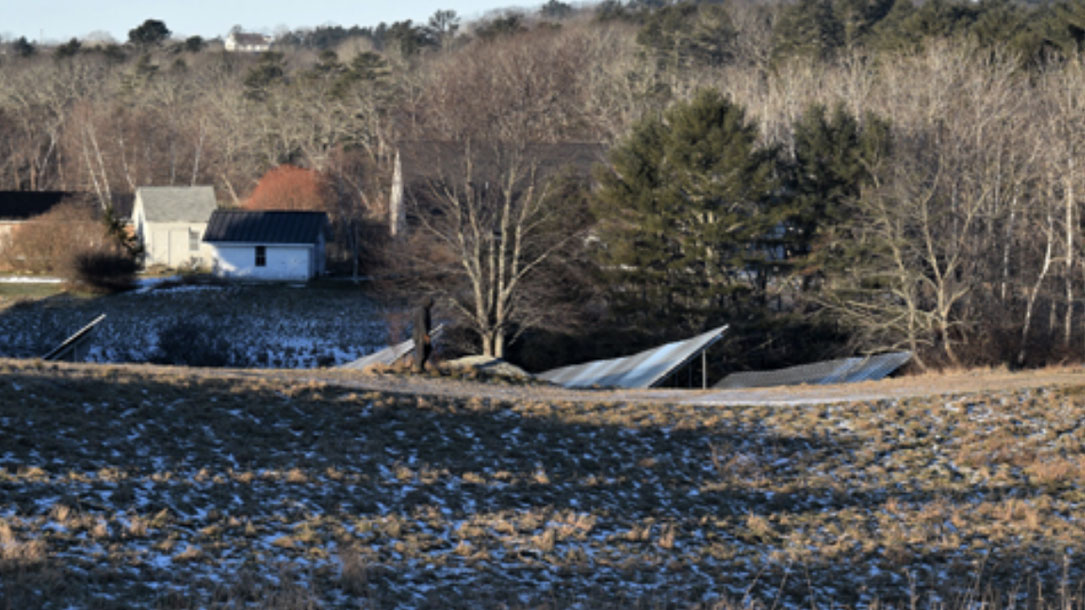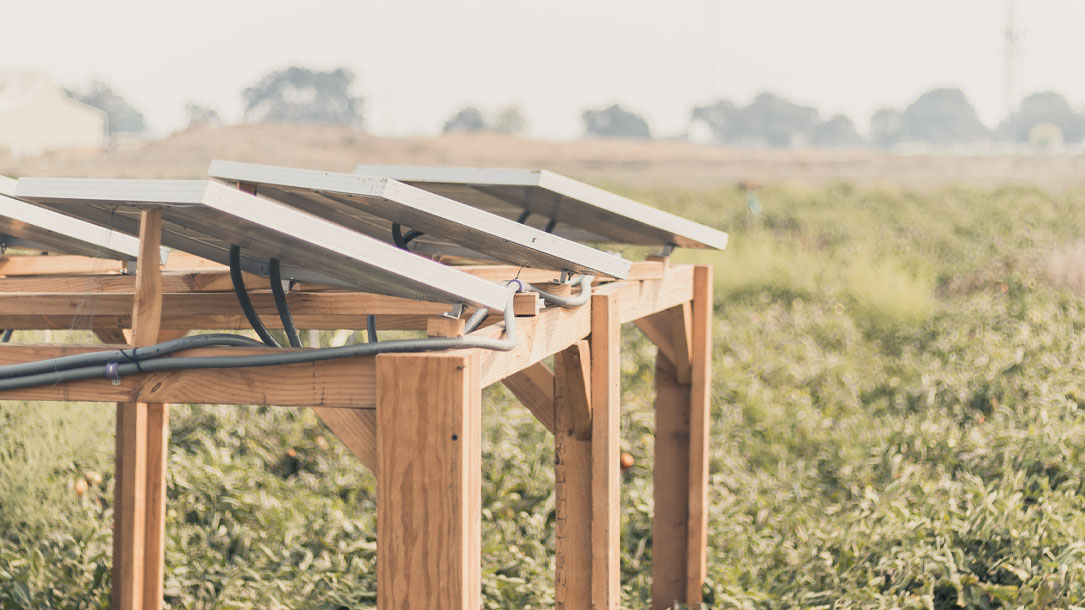Home > Climate News >

Solar, haying, and owning the solar array
Converting arable land to energy production undermines the future of farming. But innovators like Nate know it doesn’t have to be one or the other – if done right, solar can be leveraged to support farmers, rather than threaten them.
Seeing the Massachusetts SMART program as an opportunity for revenue diversification and farmland preservation, Nate pioneered a plan to own both the solar system and the land underneath. Million Little Sunbeams does not involve a lease to a solar developer but instead was designed to allow the Tassinari family to sell the excess energy to the surrounding community — a win for the family farm that has allowed it to stay in operation…

Iberdrola starts up Spain’s first smart agrovoltaic plant in Toledo
While combining solar energy and agricultural land is not new, one component that makes the Winesolar project stand out is that it will have a tracking system, with trackers from PVH, that uses artificial intelligence (AI) to determine the most efficient solar panel positioning over the vines at any time…

Spanish vineyards use solar panels to protect wine grapes
While combining solar energy and agricultural land is not new, one component that makes the Winesolar project stand out is that it will have a tracking system, with trackers from PVH, that uses artificial intelligence (AI) to determine the most efficient solar panel positioning over the vines at any time, according to Iberdrola. Techedge, an IT firm, will help the solar panel project further the wineries’ agricultural goals.
Sensors in the vineyards will record data including soil humidity, wind conditions, solar radiation, and even vine thickness to find the optimal position for the solar panels, giving the vines a fighting chance against the effects of climate change…

Farmland preservationists, solar developers to build green energy arrays
An estimated 750,000 acres of farmland in the U.S. is lost each year and “solar development if done right could potentially help” save some of that farmland, said John Piotti, president and CEO of American Farmland Trust, a nonprofit organization that works to keep farmland in production.
Earlier this week, Piotti said during a webcast meeting that his group would work with two private firms, Edelen Renewables and Arcadia Solar to develop “agrivoltaic” community solar farms in a number of states including New York…

Solar workshop series
While this workshop is over, you can get a sense of what they are helping to amplify. The following is from their announcement:
Solar workshop series comes to southern Maryland: If you’re interested in using solar electricity to power your home, farm, or business, then please join an upcoming session of the University of Maryland’s “Solar Workshop Series.”

Agrivoltaics looks at farming around/among solar panels
Double cropping solar power and organic dairy production works successfully here, but the concept – called agrivoltaics – is still very new.
Agrivoltaics is a new umbrella term defined as any farming practices on the land supporting solar power.
Around the world, innovators are looking for ways that solar panels and agriculture can benefit from the other. Flowers, pollinator plants, alfalfa, grass, vegetables and greens, and fruits and berries are some of the potential crops that people are planting in conjunction with solar panels…

How installing solar canopies over canals can help California fight drought
A first-in-the-nation project to determine whether covering sections of canals with solar panels can help California reach its renewable energy goals is gearing up to break ground early next year…
Researchers from the University of California, Merced determined that covering the 4,000 miles of California’s open canals with solar panels could save upward of 63 billion gallons of water each year, the residential water needs of about 2 million people, or enough to irrigate about 50,000 acres of farmland…

Agrivoltaics looks at farming around and among solar panels
If you are driving to the West Central Research and Outreach Center (WCROC), look along U.S. Highway 59 for large pastures where cows graze among solar panels.
The cows, under the direction of Bradley Heins, Ph.D., University of Minnesota, use the panels for shade and shelter.
Double cropping solar power and organic dairy production works successfully here, but the concept — called agrivoltaics — is still very new…

Coastal Rivers takes leap towards carbon neutrality with solar array
For those who braved mud or ice to stroll the slopes at Round Top Farm this winter, they may have spotted something shiny and new in the southwest field behind Darrows Barn.
As of Jan. 3, contractors with ReVision Energy completely installed eight rows of solar panels on a one-acre parcel at the farm and are in the process of finishing the wiring on the array. ReVision broke ground on the project in the fall.
Hannah McGhee, Coastal Rivers outreach and communications manager, said the location for the panels was selected for the minimal impact it would have on the visual landscape at Round Top for the public and abutters.

Solar sharing for both food and clean energy production
Research on the performance of agrivoltaic systems for corn, a typical shade-intolerant crop.
This article concerns research conducted at a 100-m2 experimental farm with three sub-configurations: no modules (control), low module density, and high module density. In each configuration, 9 stalks/m2 were planted 0.5 m apart. The biomass of corn stover grown in the low-density configuration was larger than that of the control configuration by 4.9%. Also, the corn yield per square meter of the low-density configuration was larger than that of the control by 5.6%.












